https://github.com/danburzo/percollate
Another tool to check out for those interested in making books in the browser.
https://github.com/danburzo/percollate
Another tool to check out for those interested in making books in the browser.
Day one of the 3 day Book Sprint in San Francisco (at the Aspiration offices) is done! 2 to go!
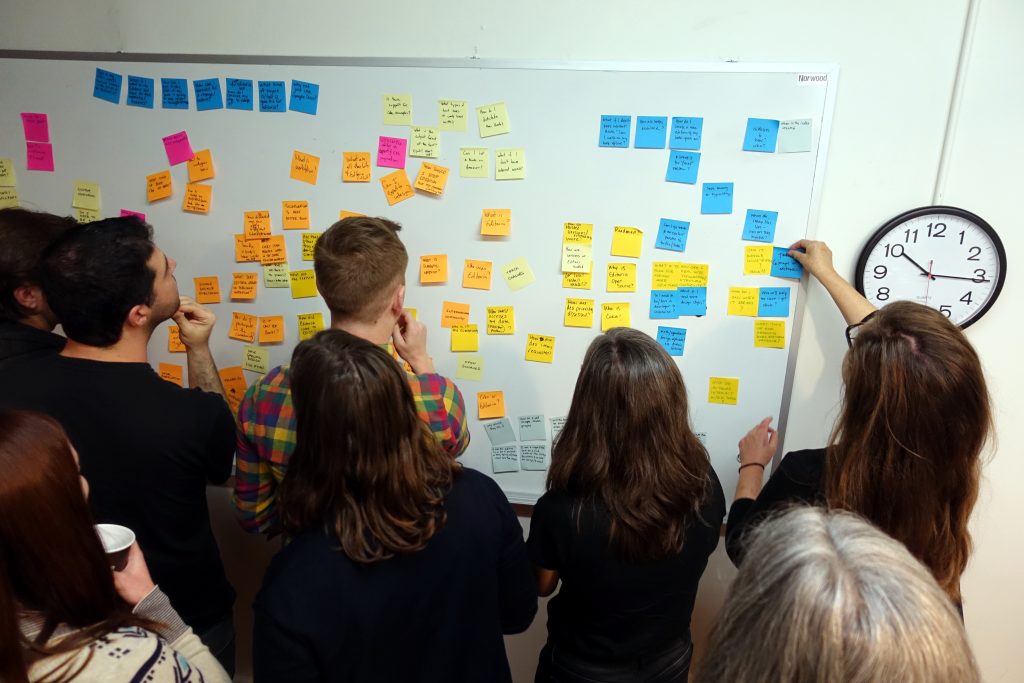
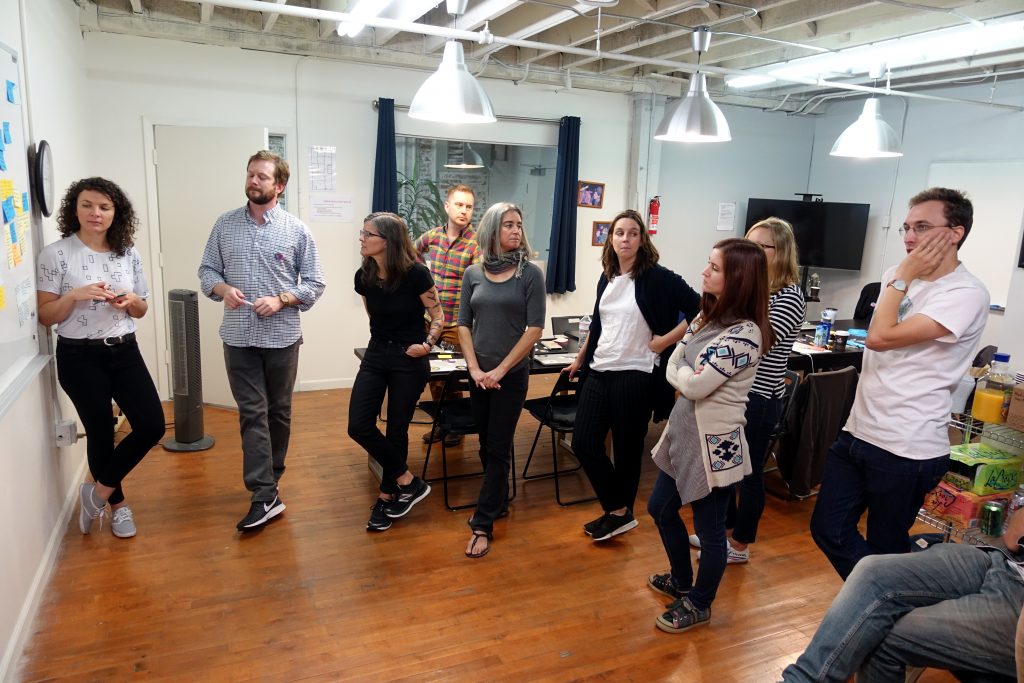
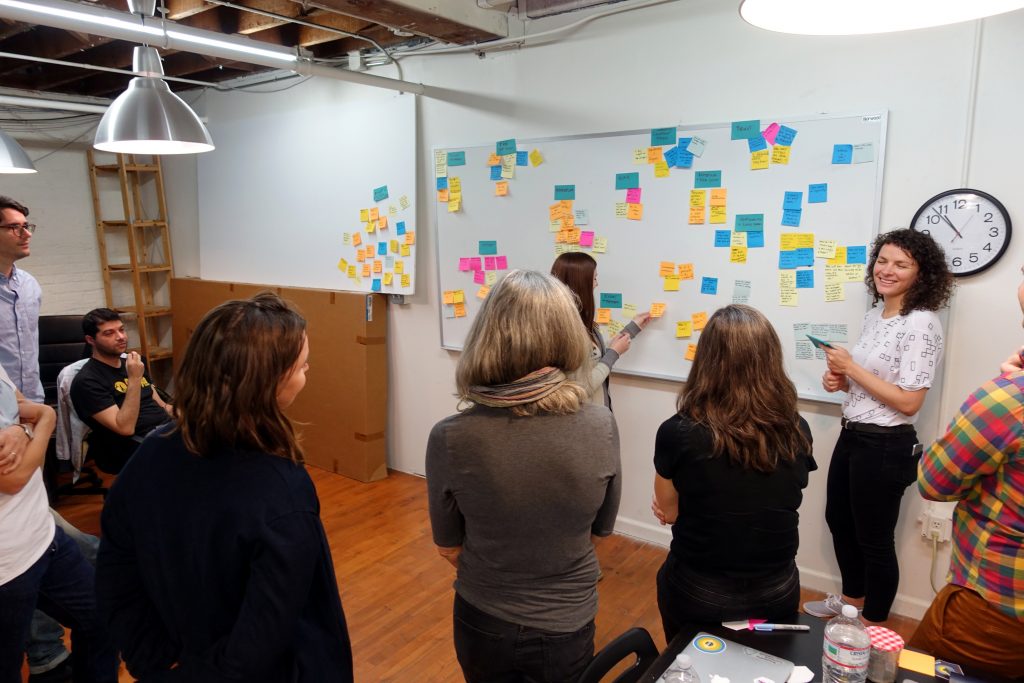
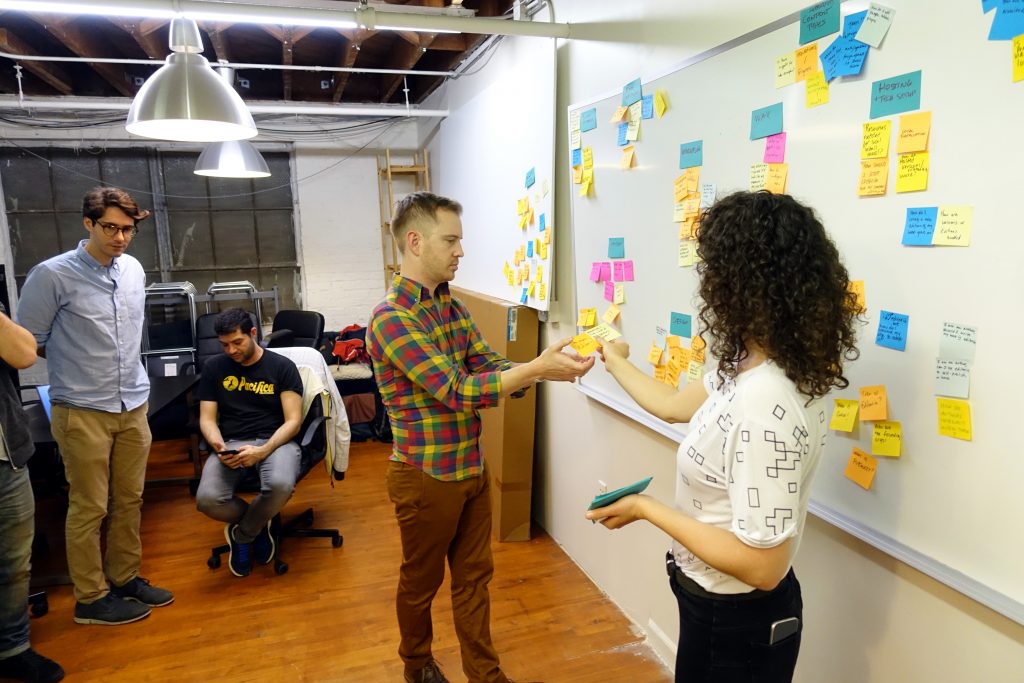
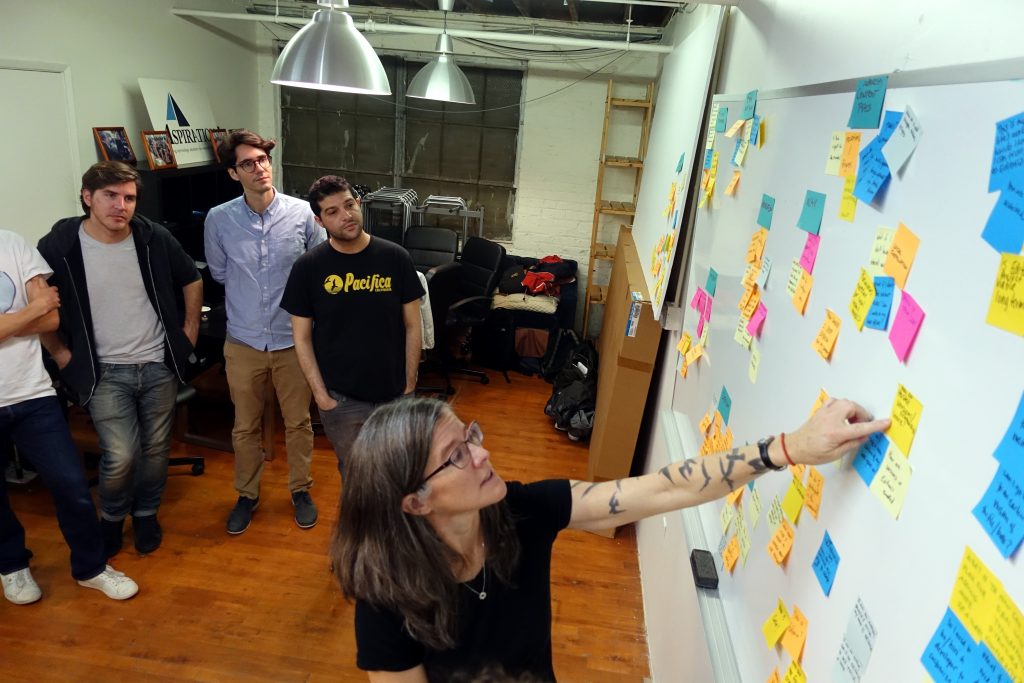
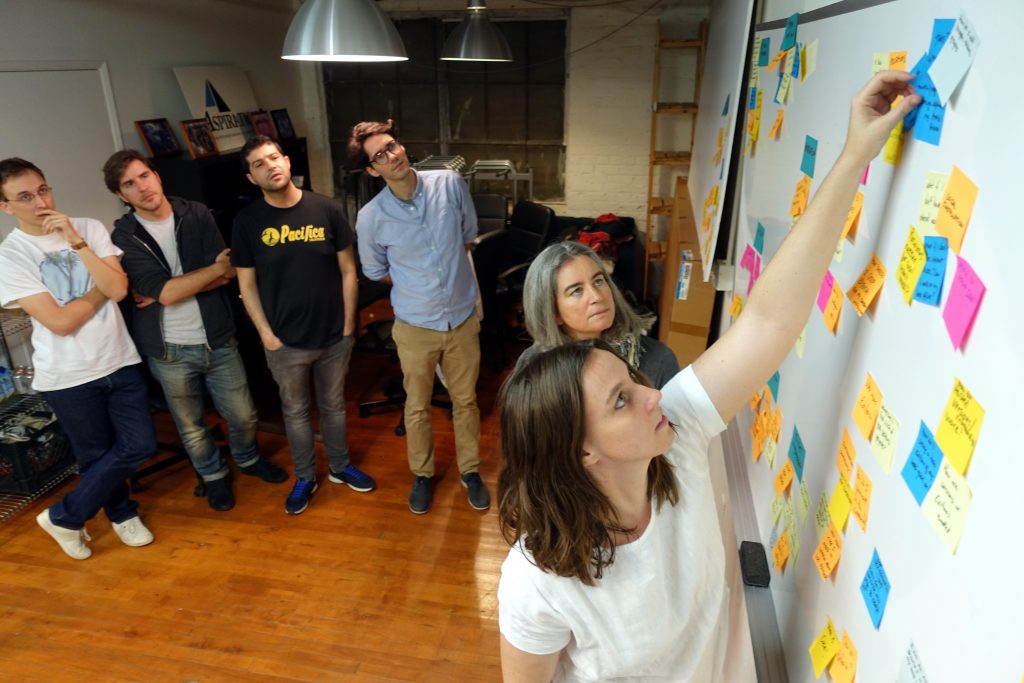
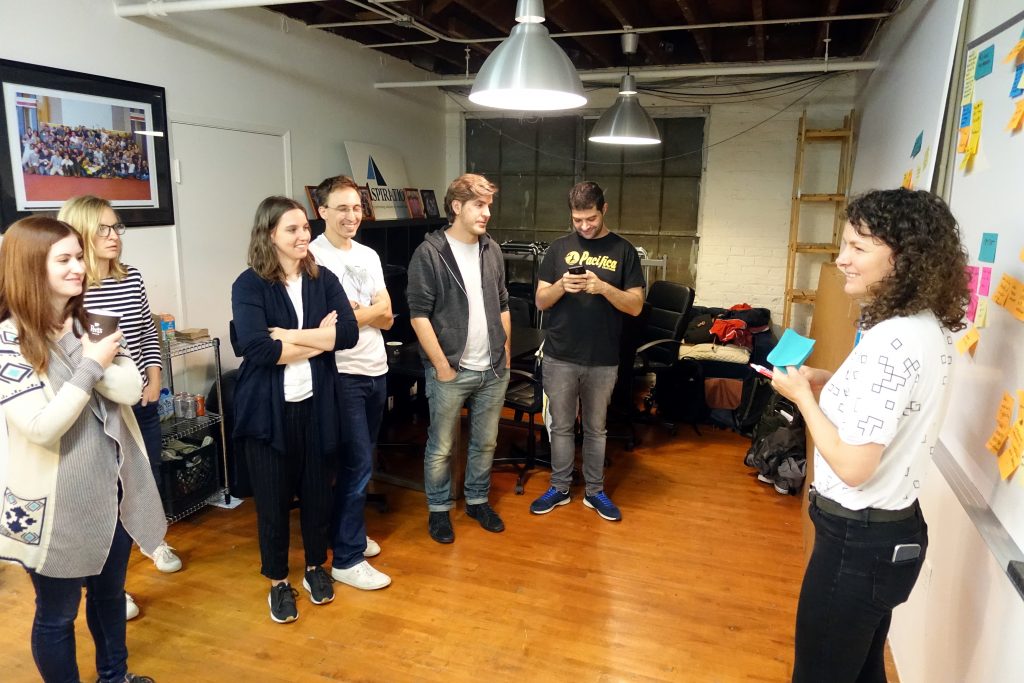
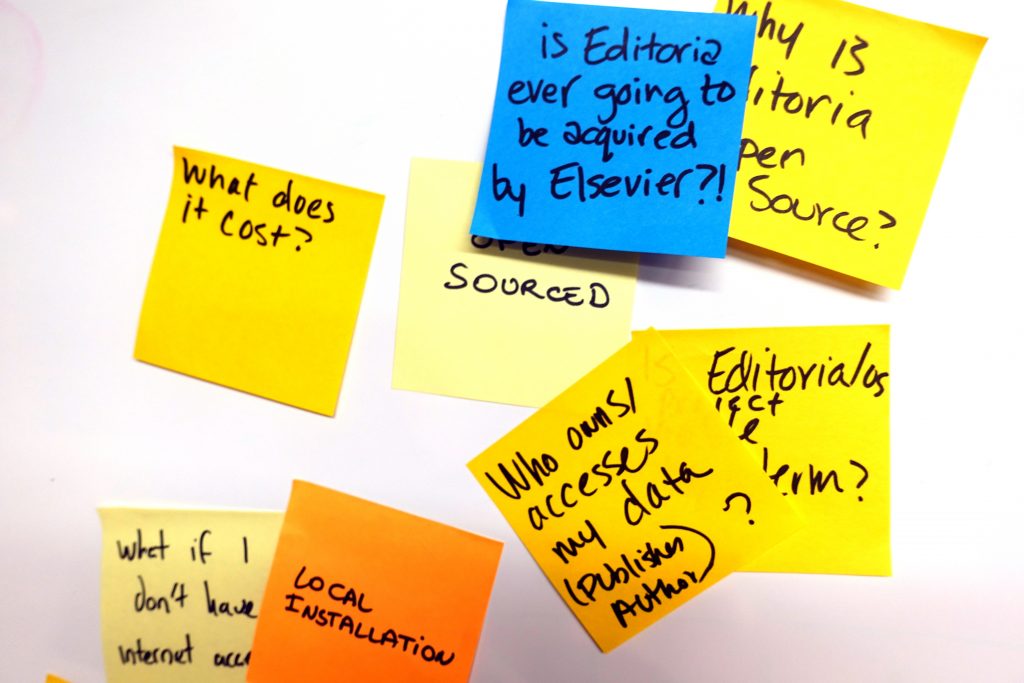
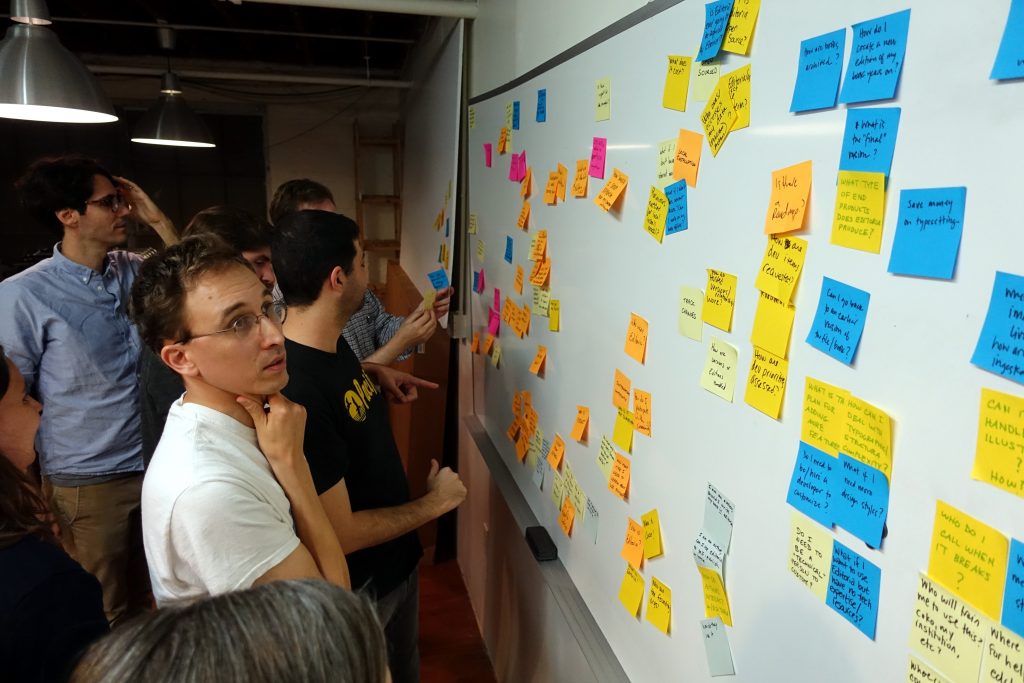
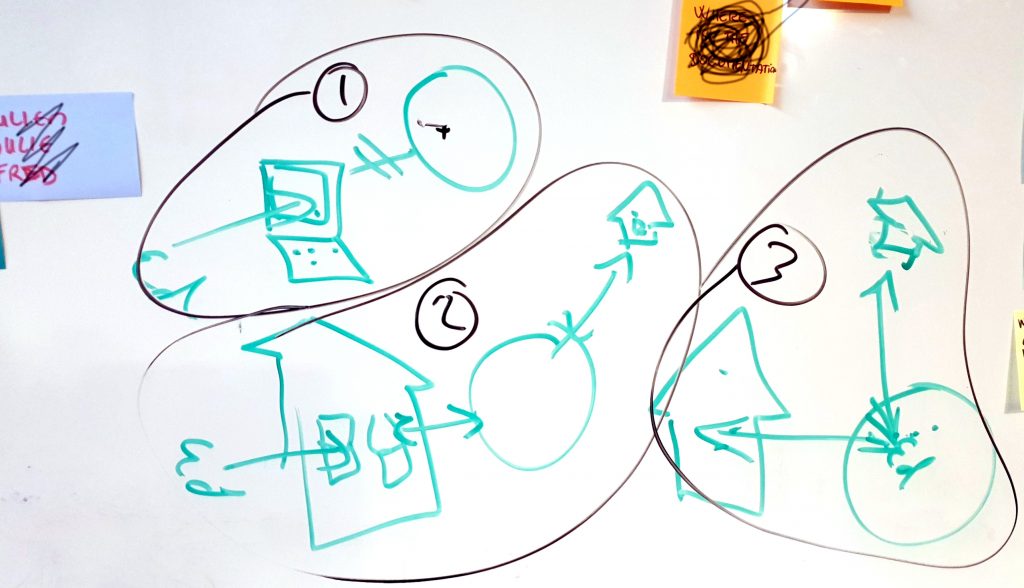
Recently Linus Torvalds stepped down (temporarily it seems) from leading the Linux Kernel project. It seems to be that feedback that he has not behaved well over the years has finally gotten through to him. There is a good article about it in The New Yorker (of all places):
I would hope that this might be the beginning of the end of the cultural trope “Benevolent Dictator”, or ‘BD’ for short…. the BD is a known cultural symbol in the open source world and its chief architect was Linus Torvalds… The theory goes that because technical open source projects are so complex, you need the equivalent of the ‘single author genius’ to sit atop the pyramid and call the shots. This notion is so heavily embedded in the culture that the BD is either aspired to by developers, or at least seen by most as being necessary.
However, this model has, in my opinion, been chiefly responsible for the terrible toxic nature of Open Source. – a culture that is often abusive, toxic, and not welcoming of diversity of opinion, let alone identity. It is the reason that women programmers, making about 33% of the world’s total programmers, make up less than 10% of open source contributors… yes, thats right – as if 33% wasn’t horrific enough out there in the wild, it seems open source repels women to below 10% engagement.
The open source world has not critiqued this situation very well.. In fact, it has eschewed criticism by and large. It is not, IMHO, a terribly reflective culture. Linus Torvalds and others like them, mostly white middle class western men, have dominated the leadership roles and carved out an unhealthy archetype that others aspire to. Linus Torvalds is literally famous for not only being the leader of the Linux Kernel project, but for being abusive in emails and communications with contributors. There are plenty of places where this is documented, no need to go into it here.
It is appalling that open source has had this blind eye for this behaviour and given Linus Torvalds a free pass. It has set a rotten, intolerant, culture well beyond the kernel project and into open source in general.
However, perhaps its the beginning of the end… I hope this will start a more in depth process of introspection which may lead to, in time, new models of leadership within open source… I have been saying for a long time that we need facilitation in open source projects… but largely this has been shot down… while advocating this, I have been told that it is a joke that someone with facilitation skills that is not a programmer would have any chance of starting an open source project (or playing an important role)…. this is because the BD is seen as the goto model and you can only be a BD if you are the biggest, baddest, developer in the room… so if you are not a programmer you don’t feature in this value metric…
However, I have started many successful open source projects and I am not a programmer. I am, first and foremost, a community builder and facilitator. It seems there might be some chance for me (hoho) now, given that Linus, in a rather naive groping around to understand the mess he has created, has said in further comments to an open letter from him to the open source community
that the open source world might need more “people who are good at mediating,” as opposed to asking developers to behave themselves.
https://www.businessinsider.com/linux-foundation-reigns-in-linus-torvalds-2015-3
Surprise! who would have thought ‘mediating’ would be a skill needed in open source! If Torvalds had the language, he might be able to conceptualise the problem and understand that what is actually required is facilitation, of which mediation is a specialist tool sometimes used but not always required (if the facilitation is done well)…but the open source world in general does not have the language for such things yet but who knows…maybe this is the start of a more sophisticated deconstruction of how healthy communities are made and what skills are required to do so…
Comment on this if you are interested in it!
First version of integration of paged.js (in-browser pagination) with Editoria…
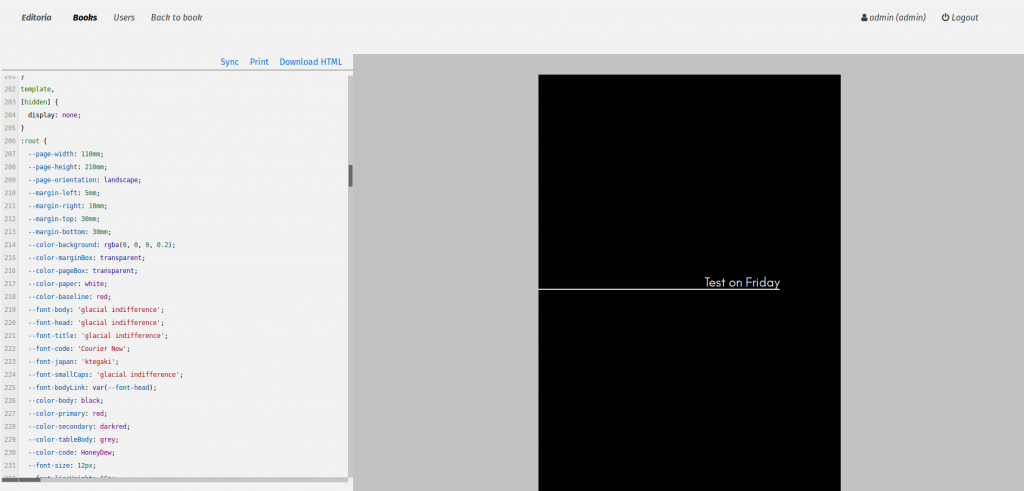
It means the CSS can be edited in the browser and the book (right pane) is rendered accordingly. It can then exported to PDF…pretty cool…
In the next days I’ll be in Montreal, both Coko and Book Sprints are presenting at Force11 so will have a heap of fun!
Then next week it is a big Editoria week. We start with a 3 day Book Sprint about Editoria. There will be about 15 of us attending and facilitated by Barbara. On the Thursday is a full day Editoria community event featuring publishers from around the world, Friday we will have some workshops including one on paged.js… and then finally, we will have a Coko Surf Club meet on Saturday 🙂 … then to NZ Sunday night. Busy!
Paul Romer, co-winner of the 2018 Nobel Prize in economics, uses open source software to share his research.
“The more I learn about proprietary software, the more I worry that objective truth might perish from the earth,”
https://qz.com/1417145/economics-nobel-laureate-paul-romer-is-a-python-programming-convert/
From Anton Moglia.

paged.js is the tool we developed for paginating content in browsers to produce print-ready PDF, all styles etc controlled by CSS. Awesome logo.
Today I ran into Biarritz to do a fast surfboard-shaping course at The Shaper House.
It was me, a chap Tyler from Florida, and the tutor Severn. We got a good overview in the hour and a half – I am super keen to try and make a board now! … they do workshops over 3 days to make your own board so I will try and get back here to do it…thanks to Anne for setting this up for me 🙂
Shaping a board these days starts with the purchase of a blank…more or less a ‘starter’ shape that can be cut down to the exact dimensions you are after. Once you have the blank you work out the shape you want and how it ‘fits’ into the blank…its kind of like sculpture in that you whittle the source down to what you want.
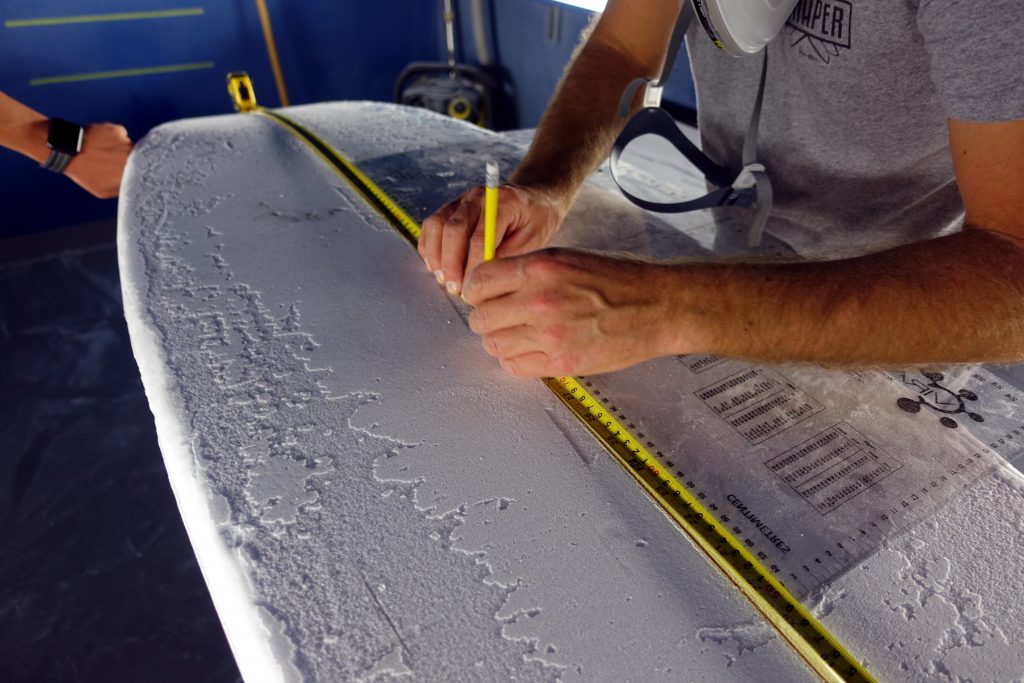
Once you have drawn out your shape on the blank you cut it down to within a few millimeters with a common saw.
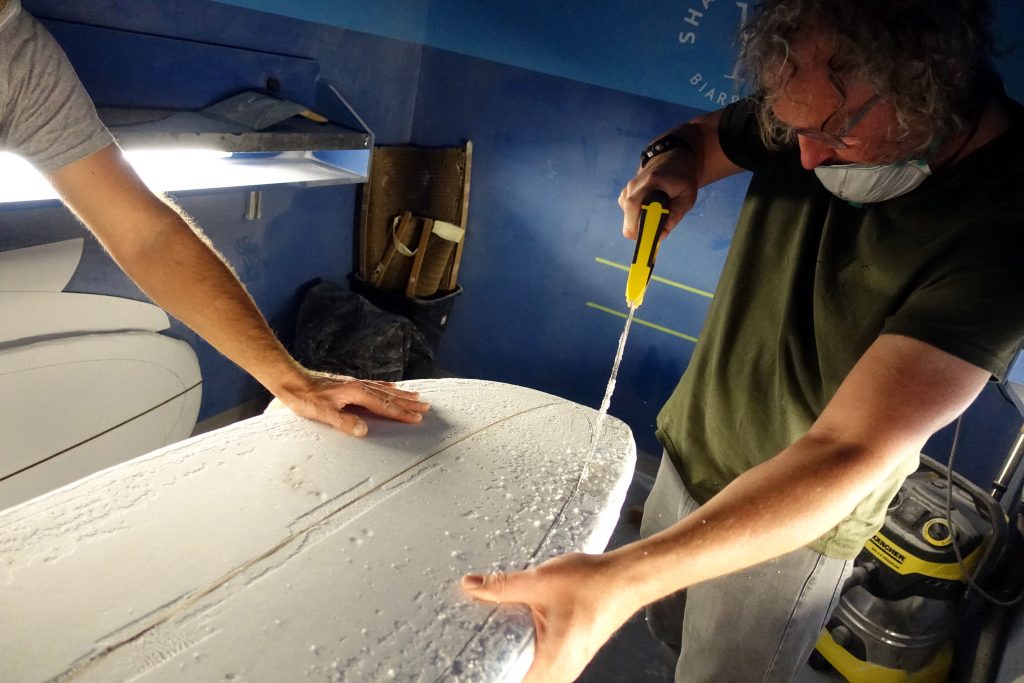
You then sand down the edges to remove the rough sides. You aren’t shaping as such yet, just preparing the blank.
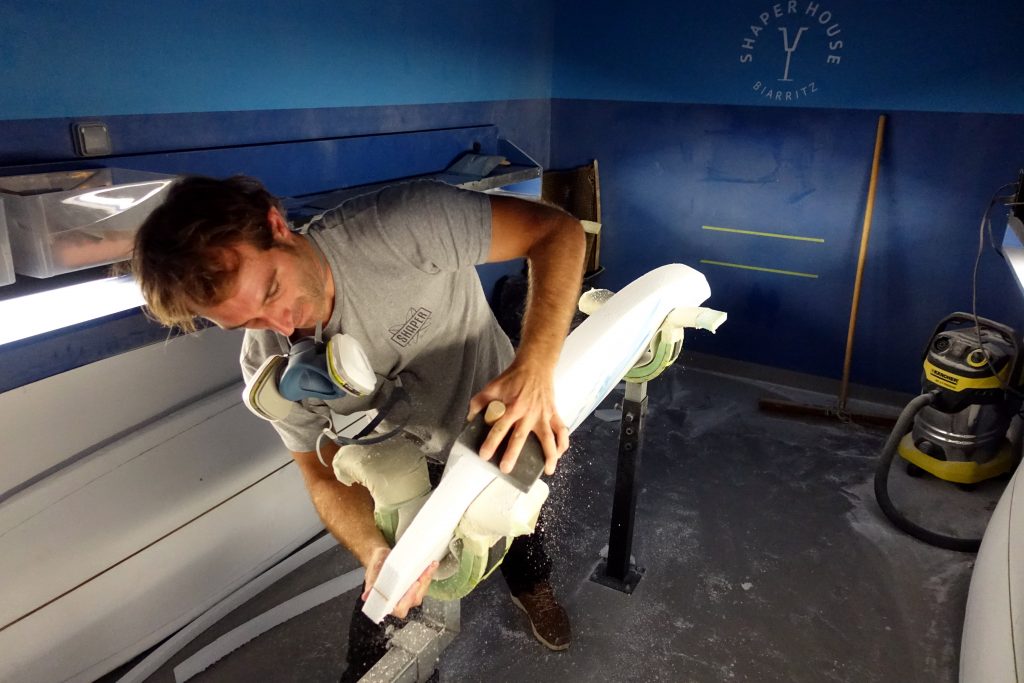
Next you plane down the top and bottom of the board with an electric plane. Essentially making the blank thinner, getting it closer to its final shape.
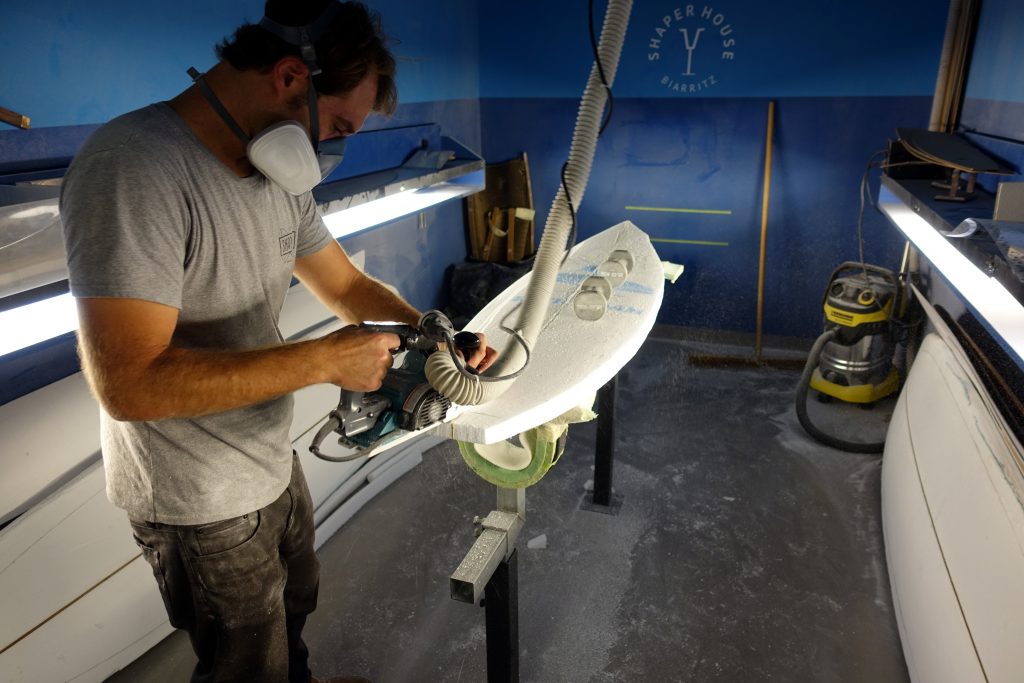
..and you sand it down some more…now with a coarse sander, but you are more or less smoothing out the rough grooves left by the plane.
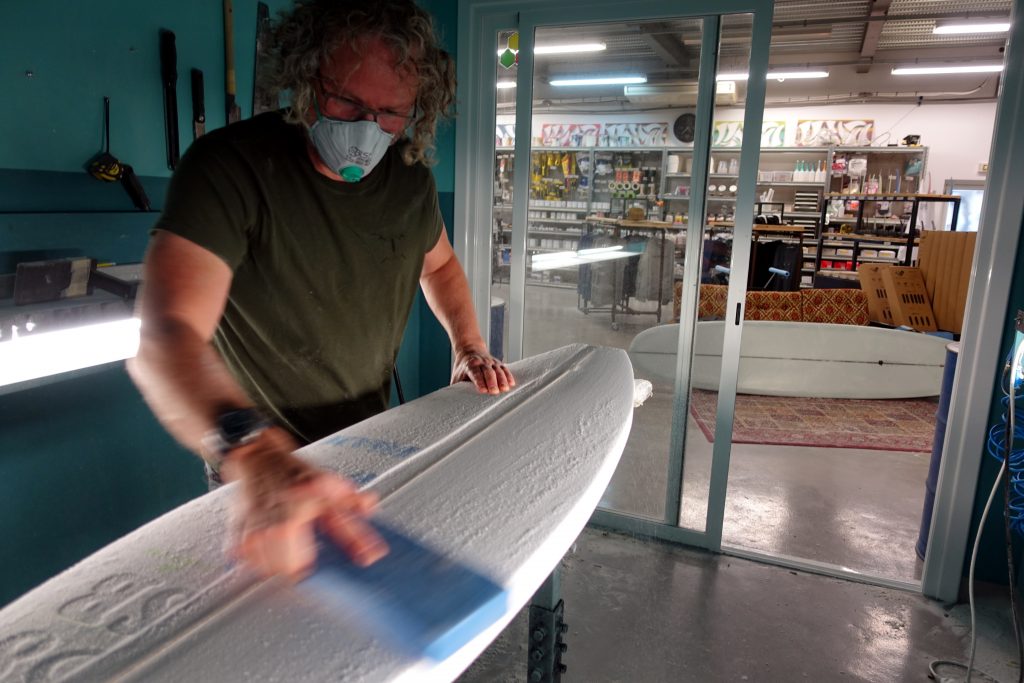
Next things start getting interesting… you start making the ‘rails’ (surfie speak for the sides of the board). This is interesting because you are starting from a ‘square’ blank and you are trying to produce beautiful rounded edges…you do this by first marking the side with two lines, these more or less provide guidelines for the shape of the rails…they can be even or hard rails and how you set these lines determines this…
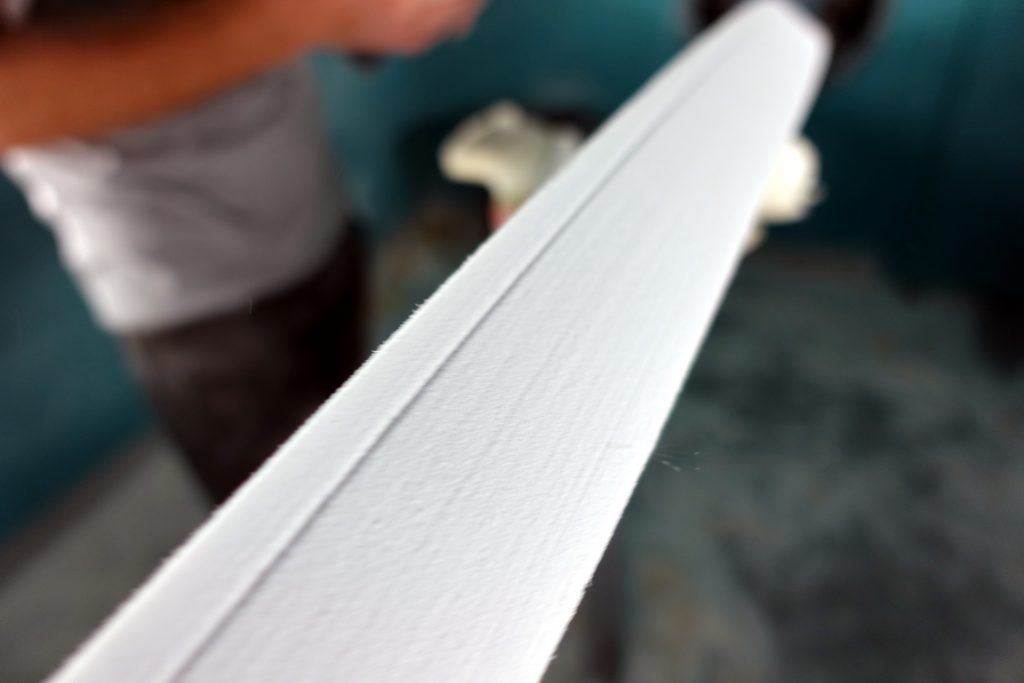
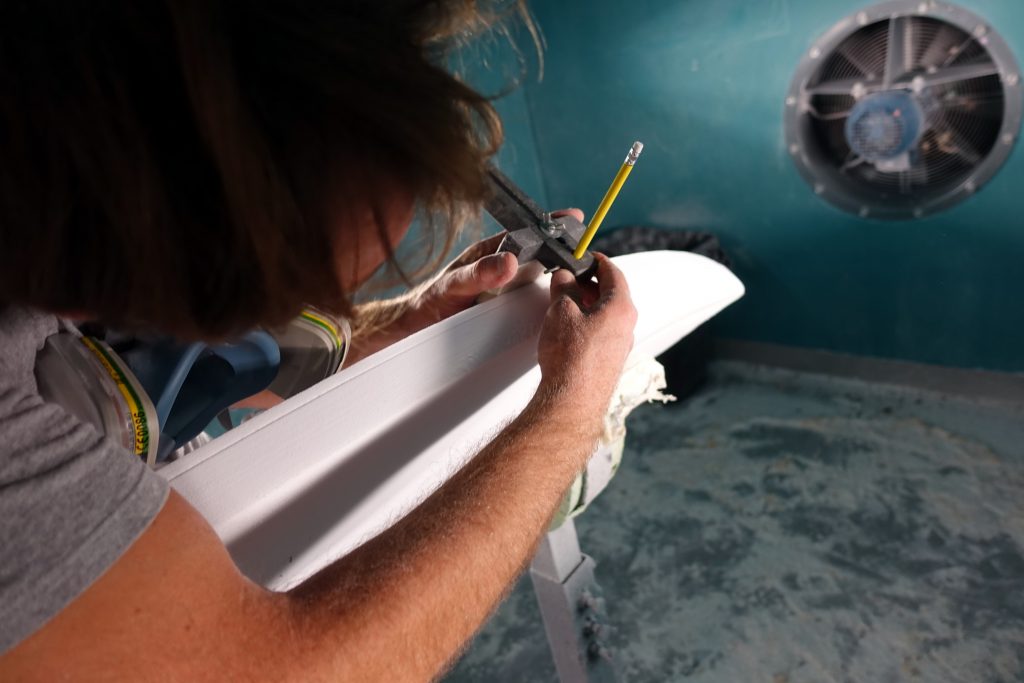
You then sand down the edges at a 45 degree angle. This gives a sort of ‘triangle’ shape to the side with a ‘flat’ top.
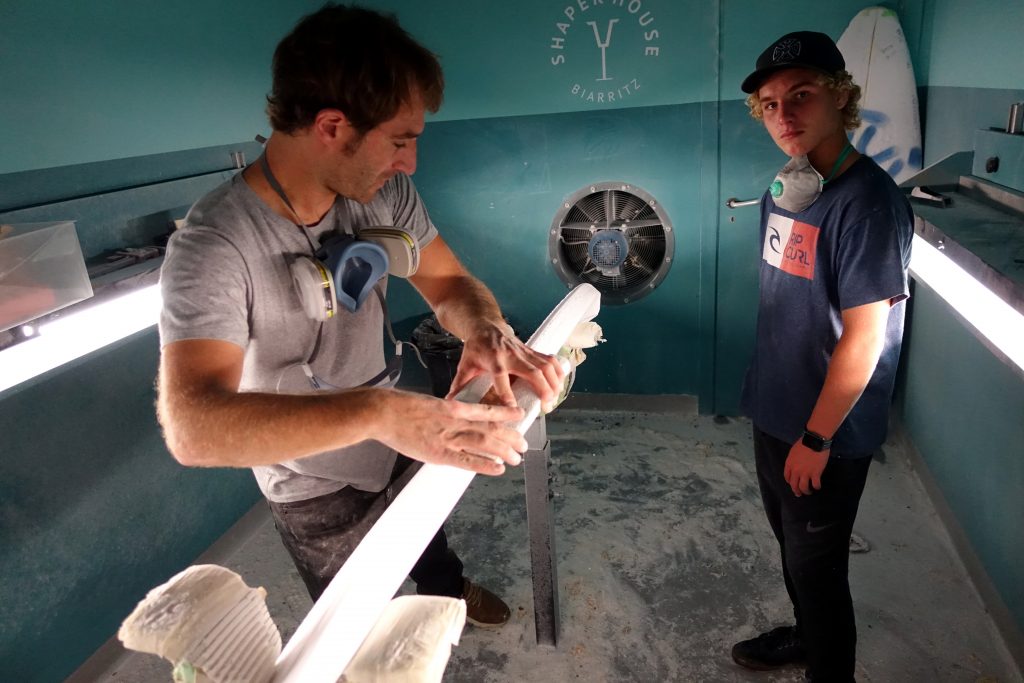
After you have this rough cut ‘triangle’ (with a flat top) you mark the sides again with a line and do the same thing…its tricky to explain, but essentially you are getting closer to a curve, except that you are doing it by producing a series of flat surfaces which represent something like the curve you want. When you this you start sanding down the edges into a smooth curve using a number of sanding tricks.
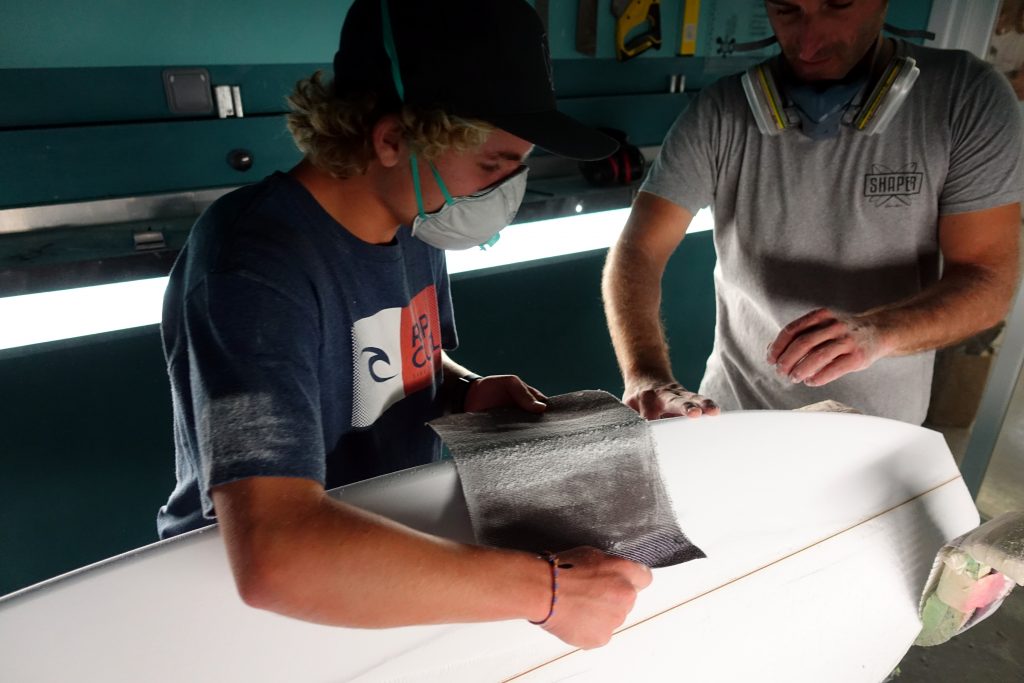
Until you have a bueatiful curved edge… when we made this it felt quite magical and looked fantastic! Simple but the result is awesome.
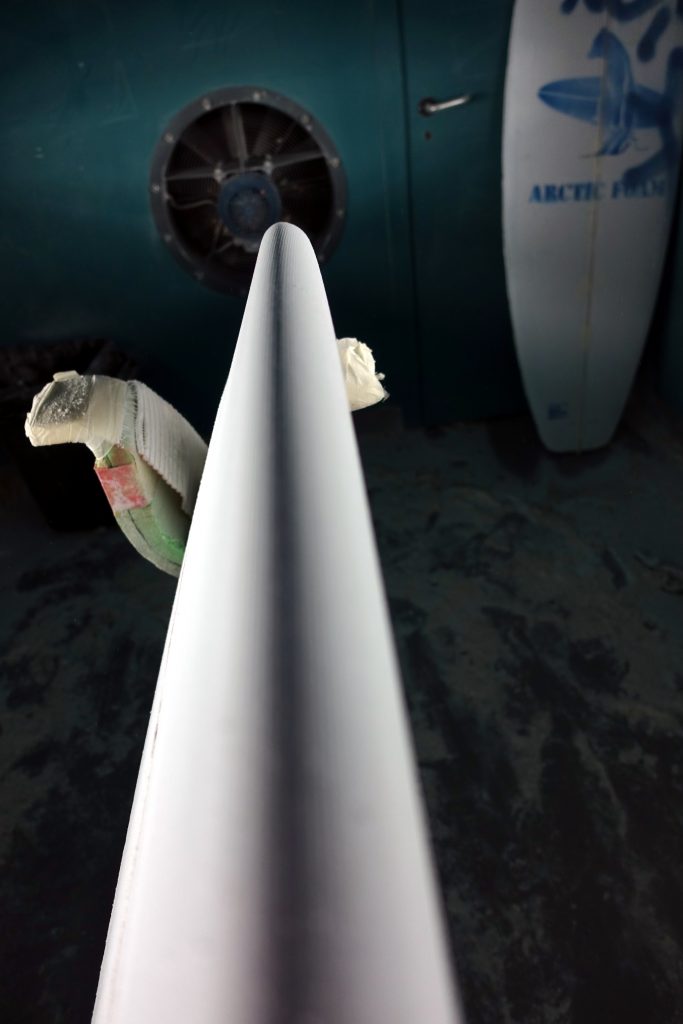
You then plane down the ‘stringer’ (wooden spine of the board) so that it is nice and flush with the board.
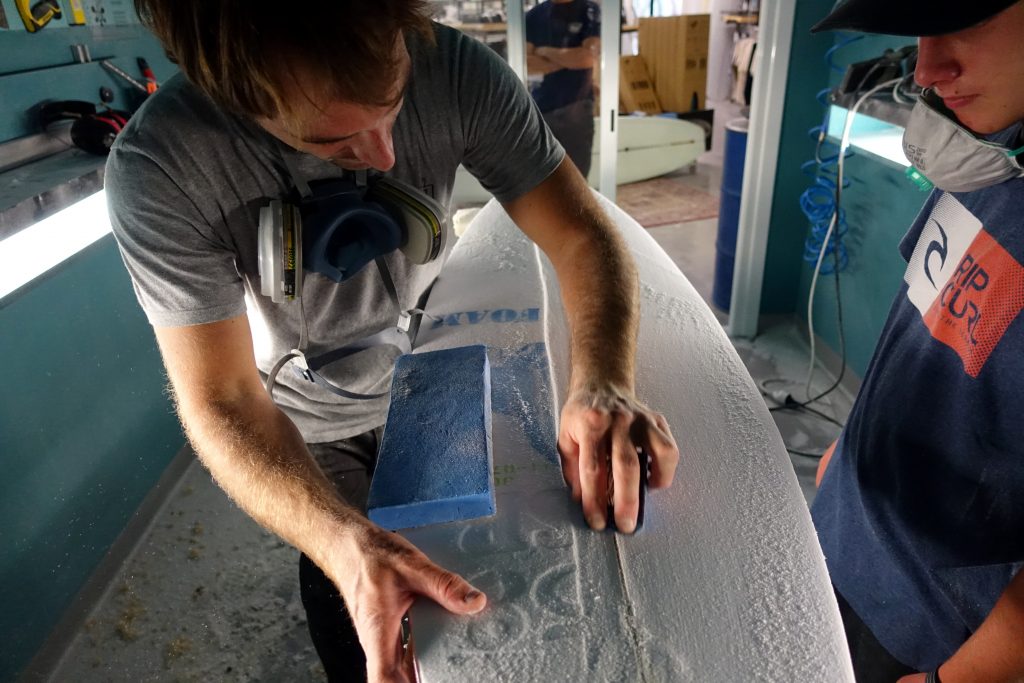
We didn’t go through the rest ourselves but Severn walked us through..how to fibreglass the board, how to set the fins etc… it was pretty interesting.
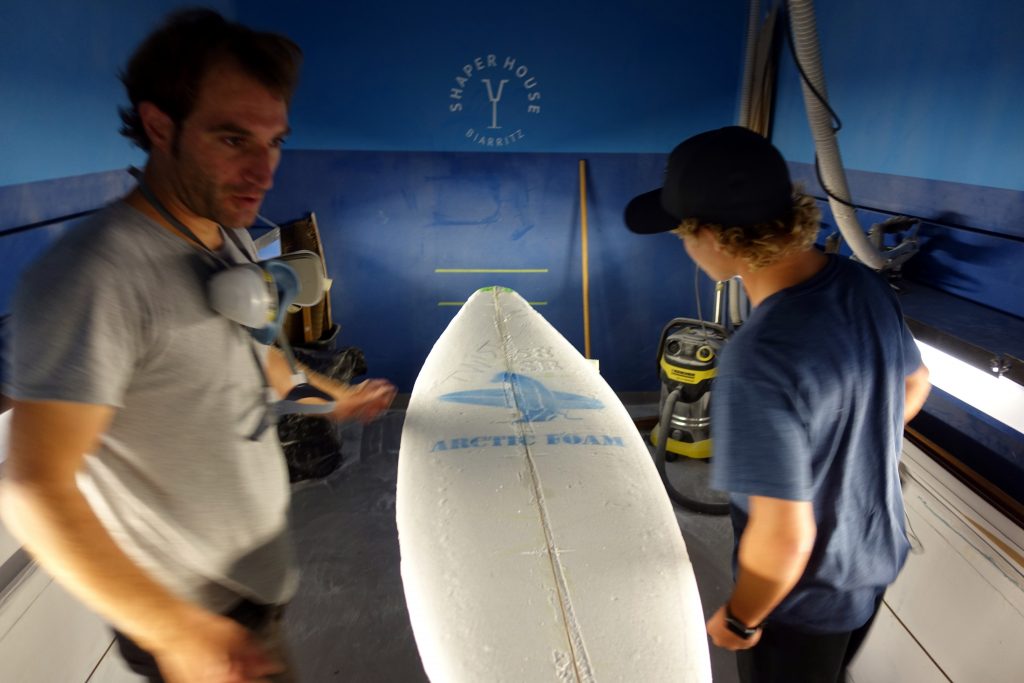
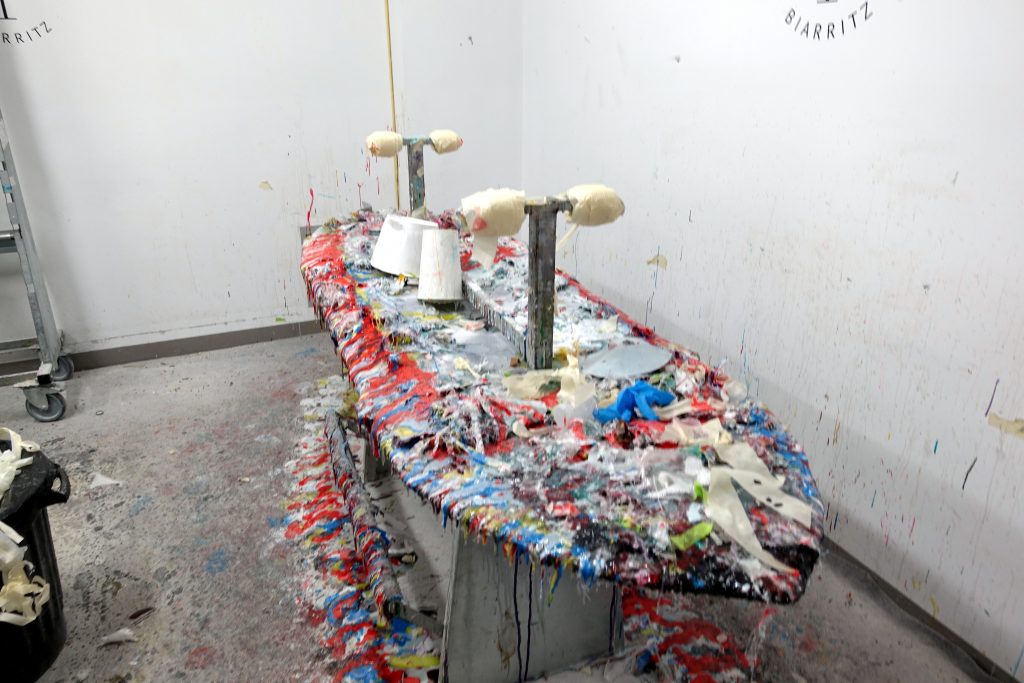
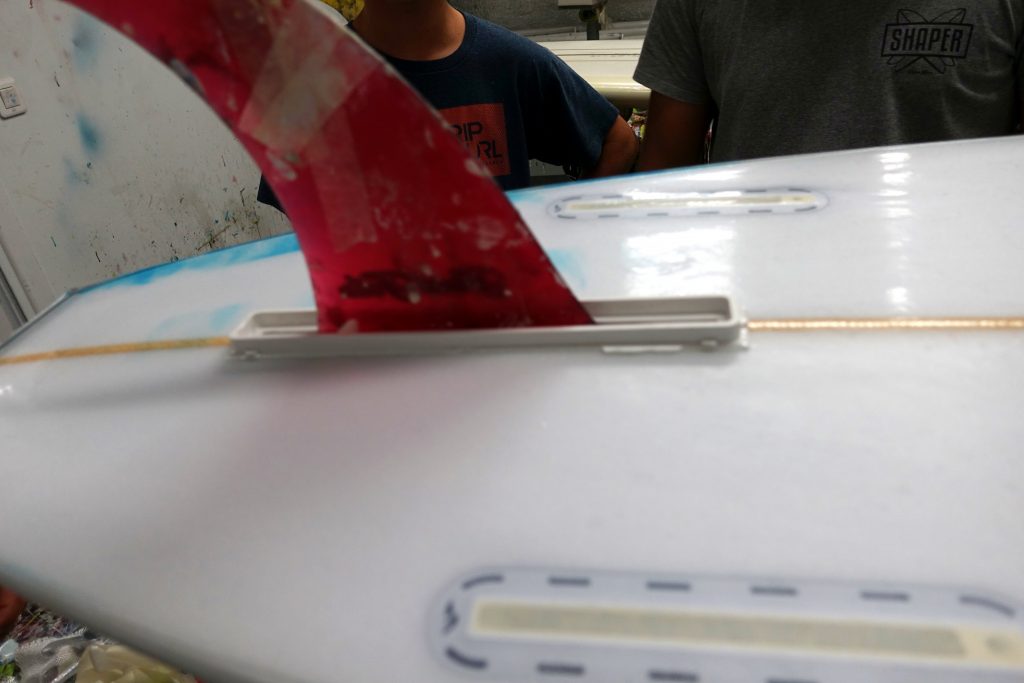
Highly recommended if you get down this way!